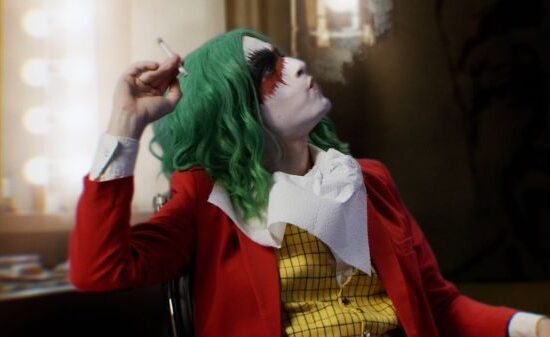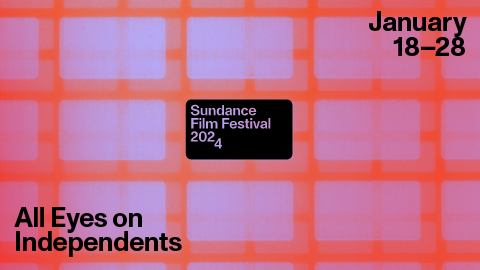F for Fake, the last feature-length film that Orson Welles would complete before his death in 1985, is a rollicking and mischievous ode to fakery, trickery and deception that receives a brand new Blu-ray release on October 21 courtesy of The Criterion Collection. This one-of-a-kind collaboration between Welles and French documentary filmmaker Francois Reichenbach is equal parts cinéma vérité and trompe l’oeil, but certain to delight and confound viewers in equal measure.
Today, F for Fake could be classified as a melange of nonfiction content and deliberately misleading “mockumentary” vignettes that combine to toy with viewer expectations within the framework of a visual essay. However, at the time of its original release, audiences had never really seen anything like it, and would have been at a loss to easily summarize the experience or explain its unique structure. Indeed, as film critic Jonathan Rosenbaum observes in an essay that accompanies the Criterion release, noted film historian Lotte Eisner emerged flummoxed from an advance preview screening in 1973 and declared, “It isn’t even a film.”
The origins of this unusual exercise in misdirection and cinematic sleight of hand were forged in a fateful meeting between Welles and Reichenbach, who had approached the mythic auteur about providing narration for existing documentary footage of infamous art forger Elmyr de Hory. A seasoned painter himself and a contemporary of Modigliani and Matisse, de Hory was living in Ibiza at the time and basking in a glow of notoriety that arrived with the publication of a biography titled Fake! in 1969. In both the book and in Reichenbach’s footage, author Clifford Irving offers no shortage of amusing anecdotes detailing de Hory’s long criminal history of fakery. And yet Irving would in turn be exposed as a fake himself after swindling McGraw-Hill out of a six-figure advance for an autobiography of Howard Hughes that was purported to be authored in the reclusive tycoon’s handwriting. Although forensic experts had declared the autobiography to be genuine, it came to light that the manuscript was in fact manufactured by several of Irving’s artist and writer acquaintances and based on previously published examples of Hughes’ handwriting.

Art forger Elmyr de Hory, featured in Orson Welles’ F for Fake. Courtesy of The Criterion Collection
After Reichenbach treated Welles to a private work-in-progress screening of the project, the auteur instead proposed to incorporate the footage into a larger, more expansive pastiche on the subject of phonies, forgers and fakes. The subject of manipulated reality is course perfect fodder for Welles, who entered the public consciousness by pulling the wool over the ears of a nation of radio listeners with his dramatization of H.G. Wells’ The War of the Worlds.
Incorporating new footage directed by Welles and co-written by his longtime collaborator Oja Kodar, the filmmaker revels in his reputation as a “charlatan” and positions himself as a comrade of Reichenbach’s deceitful subjects. He is still the youthful magician who amazes passersby at the Gare du Austerlitz with flights of illusory fancy, having lost none of his propensity for showmanship and spectacle.
Welles’ fascination with the obfuscation of truth is naturally front and center in this very personal film, although F for Fake also provides viewers with a wonderful document of his later years. The filmmaker’s obsessions and infamous epicurean enthusiasms are on full display, especially in one memorable set piece that unfolds at the Parisian restaurant La Méditerranée, well known as his home away from home during a self-imposed exile in Europe during the ’60s and ’70s.

Orson Welles in front of La Mediterranee. Courtesy of The Criterion Collection
Welles really outdoes himself with the highly inspired montage of F for Fake, which is bursting at the seams with rapid-fire edits, ironic optical effects and freeze frames that lend dramatic import to the proceedings. To wit, much of the movie unfolds in the editing room itself, with cinematographer Gary Graver observing Welles at work on a Moviola editing machine as the movie segues out of Reichenbach’s 16mm workprint and match cuts to a gorgeous 35mm blow-up of the same material. On a commentary track that is included on the Criterion release, Graver observes many instances of edits that are “so quick that the negative cutters couldn’t find edge numbers.” In keeping with the overriding theme of sleight of hand, the title of the film never actually appears on screen. Instead, Welles is seen in silhouette scrawling a question mark upon a still frame of stock footage from, appropriately enough, the 1956 science-fiction cheapie Earth vs the Flying Saucers.
From a technical standpoint, Criterion’s new release of F for Fake shines in every way, with a new high-definition telecine transfer of an archival 35mm interpositive that also sports an uncompressed monaural soundtrack, both of which serve as considerable upgrades from the already excellent 2005 DVD edition. This new release, thankfully, retains all of the supplements and extras from the original DVD edition, including the aforementioned audio commentary in which both Graver and Kodar generously share their own wistful recollections of Welles and his freewheeling production process.
The multitude of special features helps bring the supporting players into clearer focus. In the feature-length 1995 documentary Orson Welles: The One-Man Band, Kodor serves as a guide to the many unfinished projects that Welles dabbled with during his final years. Most illuminating is the inclusion of some edited footage from the unfinished narrative feature The Other Side of the Wind, featuring John Huston and Welles stalwart Peter Bogdanovich. Also included is the 1997 documentary featurette Almost True: The Noble Art of Forgery, which is a more by-the-numbers study of Elmyr de Hory and the release of his forgeries into galleries and upon museum walls around the world, and which provides a more nuanced portrait of its subject as both an unrepentant grifter and a charismatic bon vivant. Rounding out the special features is a nine-minute theatrical trailer for F for Fake, which is comprised of an assortment of original footage that Welles created specifically for distributor Seven Gables but was never used, as well as a 60 Minutes segment from 2000 featuring Clifford Irving and Mike Wallace recounting a 1972 interview in which the author refuted accusations of fraud related to his soon-to-be-published autobiography of Howard Hughes.
All in all, The Criterion Collection delivers another smashing release with its new Blu-ray edition of F for Fake, which provides both a fascinating study in the malleability of the nonfiction form as well as a boisterous portrait of Welles in his sunset years.

Courtesy of The Criterion Collection
Josh Slates is an independent producer and director based in Baltimore. He is also a film critic and field producer for The Signal, a weekly arts and culture program produced by WYPR Radio.














